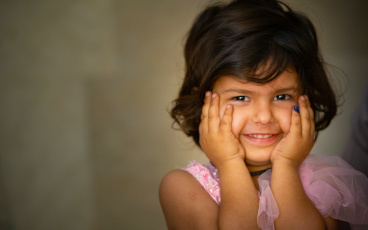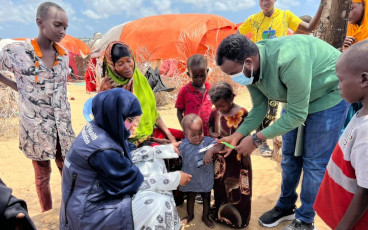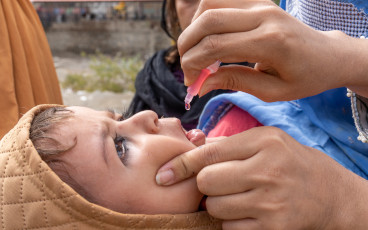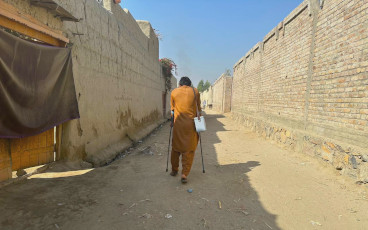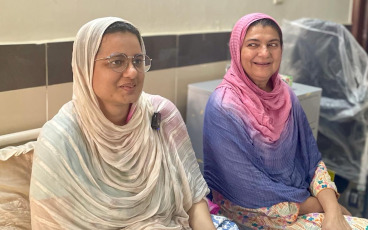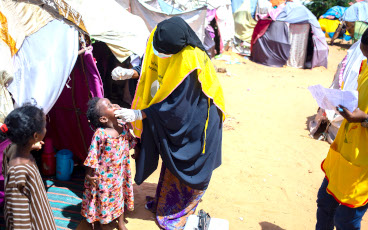Staying the course on the long road
Afghanistan’s determined effort to end polio
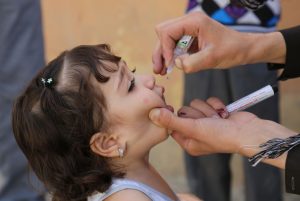
Afghanistan’s long struggle to eradicate polio is showing strong signs that the country is closer than it has ever been to finally stopping the disease, once and for all.
The year 2016 ended with only 13 cases, down from 20 in 2015 and 28 in 2014. Notably, 99% of all districts ended the year polio-free, with transmission cornered in small geographical areas in the south, east and south-east of the country.
While Afghanistan this week will announce its first case of wild poliovirus for 2017 – an 11-month-old girl in Kandahar District of Kandahar Province – the country has made substantial gains that make eradication in the short term a realistic goal. Monthly campaigns will be held through the end of May during the traditional ‘low season’ for polio transmission, which provides the best opportunity to stop transmission country-wide.
Every last child vaccinated
There is reason to be cautiously confident about 2017. Last year saw notable improvements in the quality of immunization campaigns across the country – particularly in high-risk areas – with significantly more children being reached and protected than ever before. The proportion of areas achieving required coverage standards in post-campaign Lot Quality Assessment Surveys has increased over the 12 months to December 2016 from 68% to 93%. Concurrently, the quality of campaign monitoring has improved with new approaches including remote monitoring through mobile phone technology and independent third-party monitoring.
Strategic district-specific plans for 2016-2017 are focused on 47 high-risk districts responsible for 84% of polio cases in the past 7 years. An intensified community engagement communication network has been established in these districts to ensure parents and caregivers are aware of the benefits of the polio vaccine and vaccinate their children during campaigns.
A National Islamic Advisory Group for Polio Eradication has been established in 2016 and Afghan religious scholars, the Ulama, issued a Declaration calling on all Afghans to vaccinate their children. Religious leaders are now strongly involved in supporting polio eradication efforts.
A strategy to revisit homes where children were missed was introduced in 2016. By the end of the year, in areas where the Immunization Communication Network was present, teams of mobilizers were successful in vaccinating 75% of missed children in very high-risk districts.
A single block
Afghanistan and Pakistan form one epidemiological block – reaching children on the move is another priority. Coordination and joint planning between the two countries is strong. Currently, 294 Permanent Transit Teams vaccinate children who travel in and out of security-compromised areas, special campaigns target nomadic populations and 49 cross-border teams at 18 cross-border vaccination points vaccinate children when they cross into or from Pakistan and Iran. In 2016, these border teams vaccinated over 122,000 returnee children with oral polio vaccine and over 32,000 with the injectable inactivated polio vaccine.
Surveillance is king
Underpinning all eradication efforts is a surveillance system which is able to pinpoint any virus. An external surveillance review concluded in 2016 that Afghanistan’s disease surveillance surpassed global standards and circulation of the virus is unlikely to be missed. In the past 12 months, an additional 458 disease surveillance reporting sites have been introduced and the number of reporting volunteers has increased by 18% to 21,000. Three additional environmental sewage surveillance sites have been added, in Kandahar, Nangarhar and Khost, and sampling frequency has been doubled in the south.
The road ahead: neutrality
Significant challenges remain: routine immunization coverage remains weak in many areas and insecurity and active fighting has hampered vaccination teams’ access. In this complex and challenging environment, the programme continues to maintain its neutrality. Maintaining dialogue with communities remains essential.
Now more than ever, Afghanistan has all the systems in place and tools it needs to achieve eradication: high-quality immunization campaigns, strong monitoring and supervision of vaccinators, vigorous communications platforms, a strong community engagement strategy creating an enabling environment for vaccination campaigns, national and regional Emergency Operations Centres to oversee and manage the programme, a supportive civil society, religious leadership and media and – most importantly – a committed network of local health workers who are trusted and supported by their communities.
In the coming months, Afghanistan has a unique opportunity to take the world over the finishing line for polio eradication. If all elements of the polio programme are accountable for reaching and immunizing every child in high-quality monthly polio vaccination campaigns, eradication is possible.


